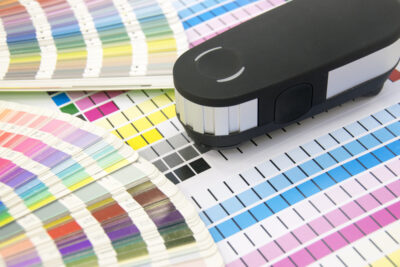 Does your facility have G7 certification?
Does your facility have G7 certification?
The printing industry, much like every other sector, is experiencing growth and change over the last few decades.
One of the most prolific has been the introduction of the G7 method, a system of print specifications that allows printers to print with color precision every time.
So integral is this G7 certification that most marketers and clients request from companies they outsource print work to.
What Is G7 Certification?
Perhaps you’re wondering what exactly G7 certification is and why companies are looking to adopt it.
Creators of the certification, Idealliance.org, say this about the G7 System Certification:
“The G7 method outlines an easy-to-follow recipe for implementing ISO printing standards and additional metrics which results in a simple but powerful way to match from proof to press.”
G7 continues to change the printing as we know it and isn’t going anywhere anytime soon. This is evident, and that’s why brands and creatives are demanding certification from printers.
Apart from this external pressure, here are 7 reasons why companies are seeing an increasing need for certification.
1. Print Anywhere
Before understanding the importance of G7 certification for printers, let’s consider the value of G7 for brand owners.
Idealliance prides itself in G7’s ability to ‘align printing devices for one file, one calibration, and one aim point.’
Why is this good news for brands? It means they can outsource their print services to printers anywhere so long as they have G7 certification.
G7 certification makes it possible for brands to print their work at any G7 certified facility even if they are out of town!
2. Promotes Color Consistency
Color is important in marketing, and brands are now cognizant of this fact.
For example, did you know that color increases brand recognition by 80%?
Yes, and that up to 90% of buying decisions are made simply on color alone?
Color psychology, the study that focuses on how colors affect human behavior and perception, tells us that color has a massive impact on how people interact with brands.
Some experts say that design and color are a brand’s silent ambassadors. And in a world where we’re constantly seeing images, we see this to be true now more than ever.
Hence every brand is looking for printers who can assure color consistency when printing.
3. Standard of Excellence
With so many fly-by-night printers emerging, how can companies set themselves apart? What can they do to demonstrate their investment in their craft and business?
Well, one sure-fire way is to get G7 certification.
G7 Certification is a mark of quality. It’s the industry’s leading standard and hallmark of excellent print work.
Because the G7 certification is not a lifetime certification but rather one that must renew annually, brands and clients feel assurance of the printer’s commitment to proof to press best practices.
4. Saves Time
Printers that do not have G7 certification can attest that printing can be an onerous task. Yes, especially if their devices are not gray balance calibrated.
Such devices will produce casted images. And casted images must be manually color corrected if you desire any good quality prints.
This manual gray balancing and color correction is laborious and time-consuming. However, by simply getting G7 certified, companies have their devices gray balanced and calibrated, meaning considerable time is saved with no need for color correction each time images go to print.
And while we’re talking about saving time, let’s consider how spectrophotometry in the G7 process simplifies the entire printing process…
5. Streamlines Printing Operations
It’s not just the grayscale that must balance when printing. It’s not unusual for the press team to notice magenta, cyan, and yellow casts when analyzing the final print press sheets.
When these casts are noticed, the next step often involves manually reducing the hue causing the cast. If casts are coming from several colors, meticulous care will have to be taken to correct this to guarantee color fidelity.
Fortunately, the pressroom doesn’t have to fret about this technicality anymore because of spectrophotometry used in the G7 process, which streamlines the entire print process.
6. Proven Quality Control
Without a benchmark against which to measure quality, it is oftentimes difficult to agree with clients on outcomes.
G7 certification removes all ambiguity by establishing a firm and fixed point of reference for color through the calibration of devices.
The G7 model is proving to be an extremely reliable quality control resource that printers, marketers, and creatives can rely on effectively with little to no issues.
7. Great Efficiency
Companies understand that brands and creatives can be busy. And for this reason, companies must find ways to be as efficient as possible with the printing process.
When a facility has G7 certification, efficiency becomes the norm.
How so, you may be asking?
You see, G7 printers generally have faster turnaround times because the design process actually takes place internally and not on the actual press itself.
What’s more, the overall cost of proofing and shipping before printing reduces significantly.
That’s not all.
Because G7 is proof of high-quality print, marketers generally have an overwhelmingly lower need for on-site press checks and travel to the print facility to assess and approve print work.
Conclusion
With the rise in print and digital media, color is no longer an abstract component of marketing. It’s central.
Furthermore, owing to the knowledge we now have from color psychology about how color affects consumers and can even influence their purchasing decisions, brands and marketers are now more particular about color fidelity.
With such pressure, companies have begun to turn to Idealliance.org to obtain G7 certification.
If you would like to learn more about getting your facility G7 certification, be sure to read our previous blog, How G7 Training and Certification Works at Your Printing Facility.
